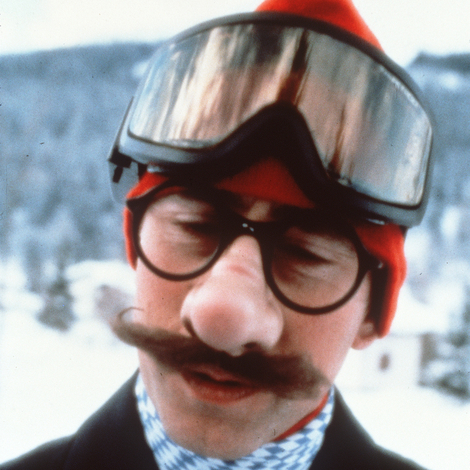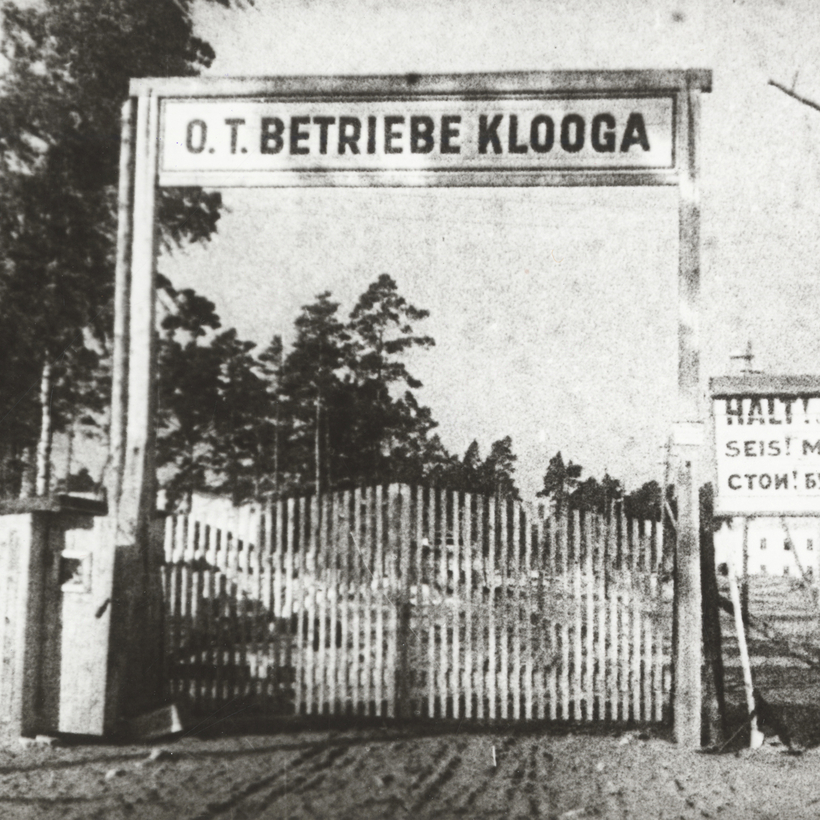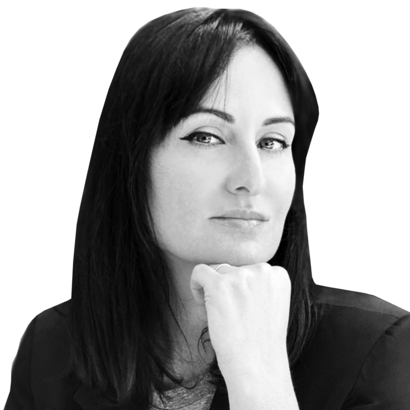Caroline Wallis was living under an assumed name. She just didn’t know it. Growing up in San Marino, California, she went to church at Christmas—her family was Catholic, she believed. There was nothing particularly out of the ordinary about her grandparents, who lived quietly in upstate New York and snowbirded down to Florida in the winters.
Her grandfather, Ben Wallis, died in 2015. A recent graduate of U.C. Berkeley, Caroline joined her family a few months later to help clear out Ben’s Rhinebeck farmhouse, where he and his wife had lived for more than 50 years. They began to uncover unnerving items: passports and immigration papers with unfamiliar names on them; a Hadassah membership card that seemed to belong to a stranger.
Then Caroline’s 16-year-old brother summoned the family to the basement, where he had been vetting a huge stash of furniture, papers, and other accumulata. He had found an envelope whose exterior featured a sunny, recent family photo. Inside was an old black-and-white photograph, featuring some sort of heap in a forest. The family scrutinized the image together. “I remember thinking at first that it was a pile of dirt,” Caroline says.

But it was not a pile of dirt. Rather, it was a pile of bodies: dead prisoners in a W.W. II labor camp in Estonia, ruthlessly administered by Nazi occupiers. Other horrific photos were soon uncovered of these bodies and more: piled in ditches, strewn across fields, and grotesquely wedged into a pyre-like pile of logs.
The family scrambled to piece together information that might link together all of these disturbing objects. They combed through Ben’s possessions; they tracked down his longtime friends and associates.
Then, on the morning of January 29, 2019, Caroline arrived at work at 23andMe, the consumer DNA-testing company, where she was working on the Ancestry team as a content strategist. It was still early, before her first morning coffee, when she got an e-mail from a faraway family acquaintance. The body of the e-mail contained a single, ominous link. Caroline clicked on it. On her screen opened an October 30, 1944, article from Life magazine by the famed war correspondent John Hersey, titled “Prisoner 339, Klooga.” The subtitle: “Pole who escaped labor camp tells how the Nazis tortured, butchered, and burned their captives.”

The story featured a photo of said Pole, “Prisoner 339,” and there, on her work-computer screen, was the face of her grandfather, taken 75 years earlier. His name, it turned out, was Benjamin Weintraub, not Benedict Wallis; he was Jewish, not Catholic; he hailed from Wilno, Lithuania; and much of his family had been rounded up and methodically massacred by the Germans during the Second World War. Hersey’s account of Weintraub detailed his nightmarish experience living as a nameless prisoner first detained in a Jewish ghetto and then in the Klooga detention camp, in Estonia.
“I felt sick,” says Caroline. “I had to go to the bathroom and collect myself. It was just utter shock.”
They began to uncover unnerving items: passports and immigration papers with unfamiliar names on them; a Hadassah membership card that seemed to belong to a stranger.
The shock is understandable: “Prisoner 339, Klooga” is a tough read, even for those with strong stomachs for such fare. And it would have had to have been an exceptional account to capture Hersey’s attention—as a war correspondent since 1939 for Time and Life, he had seen the worst of the war and of human nature: smoldering citywide ruins, mass graves, desperate refugees, battle-shredded bodies, the works.

In 1944, Hersey had been stationed in Moscow as Time’s bureau chief and had, along with other foreign correspondents, been taken to the Klooga camp by their Soviet minders to witness then fresh evidence of German massacres. There, Hersey met Weintraub, who had been a prisoner at the camp, abandoned by the Germans only a week earlier as the Soviets advanced on the area.
With the help of a Polish-English dictionary, Hersey later recalled, he was able to learn of Weintraub’s descent into hell. Once upon a time, Hersey reported, Weintraub had had a “happy life … a healthy, noisy life.” He had studied at Wilno University and the Wilno Conservatory of Music. There had been ski trips and restaurants, swimming clubs and tennis matches and romantic dates.
A chemical engineer, he had married his great love, Liba, in 1941, and during the war he carried his treasured wedding ring in a hollow space he’d carved into his boot heel. The couple had been rounded up not long after they had been married and taken to a walled ghetto as “specialist” detainees. This would prove a lucky designation, Hersey wrote, because all 12,000 “non-specialist” prisoners were, just weeks later, “taken out to a place called Ponary, twelve kilometers from Wilno, and were killed by machine-gun fire.” Weintraub’s parents and two brothers were murdered in subsequent “clean-outs.”

In 1943, the surviving ghetto prisoners were taken to a forest camp near Klooga, an Estonian town. It was technically a labor camp, but in Weintraub’s retelling, Klooga is revealed to have been a death camp and labor camp in equal parts. “From this time forward Benjamin Weintraub was No. 339, Klooga,” wrote Hersey.
He described the ghastly conditions and rancid, rare meals, and the years of “manual labor for the master race.” There were whipping cradles and dog attacks and guards who “were trained in impersonality and seemed to take pleasure in hurting flesh and bone.” One guard occasionally went berserk and murdered prisoners with an axe.
In the weeks just before Hersey met Weintraub, hundreds of his fellow prisoners had been conscripted by his guards to help create an enormous wood pyre. With the Soviets advancing, the Germans intended to burn evidence of their war crimes. This included burning the pyre-builders themselves, whom the guards began to shoot methodically in their faces or stomachs.

“As soon as all of the men on the [pyre] platforms were shot and before some of them were dead, the others were ordered to build another layer to the platform right on top of the bodies of their companions,” Hersey wrote. “Still no boughs or sticks were put in the little square in the center. The Germans had thought of everything: that was to serve as a chimney, to give the fire some draft.”
Weintraub managed to escape and hide in a nearby bunkhouse, the smell of burning flesh and wood traumatizing him as he hid in the dark for days before the liberating Soviets arrived.
His name was Benjamin Weintraub, not Benedict Wallis; he was Jewish, not Catholic; he hailed from Wilno, Lithuania, and much of his family had been rounded up and methodically massacred by the Germans.
It seems strange that Hersey’s reporting on Weintraub and Klooga—which is every bit as terrifying and damning as Lee Miller’s Dachau photos or those taken by Margaret Bourke-White at Buchenwald—is not better known, especially given the renown of its author. Hersey was a Pulitzer Prize winner and a decorated journalist, and his works were made into movies and Broadway plays. His 1946 blockbuster article turned book, “Hiroshima”—which documented, for the first time, in graphic detail, what it had been like to be on the receiving end of a nuclear attack—has been called the most influential work of investigative journalism ever created.
But “Prisoner 339, Klooga” has been largely forgotten, findable only in a virtually unreadable version of the original issue in Life’s digital archive, an abridged Google book version, and in a now out-of-print book compilation of Hersey’s profiles. Yet it deserves more attention, firstly and obviously because it unsparingly depicts the end results of the sorts of nationalist agendas and hatreds once again surging around the world. But the story also epitomizes what would become one of Hersey’s primary missions: battling the sort of dehumanization that had enabled those wartime genocides across the globe in the first place.

To the Germans, Weintraub had been simply a number, an animal to be worked to near death and then murdered, but Hersey was determined by that time to personalize these atrocities, to get behind anesthetizing statistics, to drive home the humanity of the masses. With the intimacy of “Prisoner 339, Klooga,” he was able to accomplish what even the most appalling photos of piles of anonymous dead victims could not. And Weintraub was a perfect initial journalistic subject: a blameless, young civilian victim with whom practically any reader, in any Western country, could empathize.
“From this time forward Benjamin Weintraub was No. 339, Klooga.”
Two years later, Hersey complicated matters by depicting the ordeal of Japanese civilians incinerated by atomic bombs—it was far dicier for a reporter to humanize, especially for American audiences, this much-demonized enemy populace. But Hersey would later insist that he was dedicated to battling dehumanization universally.
“I had also come to realize that if our concept of that civilization was to mean anything,” he wrote in 1989, “we had to acknowledge the humanity of even our misled and murderous enemies.” If we couldn’t learn to do that, he concluded, human beings had no real shot at surviving—then, now, or in the future.
Hersey helped Weintraub to connect with a surviving family member and may have helped secure visas for transit to the United States in 1946. Weintraub and his wife—who miraculously also survived the war and became known as “Lila” in the U.S.—set to work constructing an unobjectionable, assimilationist existence. Their granddaughter speculates that they kept their identities and story secret partly because of survivors’ guilt and partly to provide continued protection for their descendants.
Caroline, who has just completed a book on her family’s history, recalls that Lila, who died in 2022, had been especially upset when Donald Trump was first elected president in 2016, and as she saw the recent rise of attitudes and hatreds similar to those she witnessed in the 1930s.
It’s fortunate, perhaps, that she did not live to see the results of a global January poll taken by the Anti-Defamation League, which found that nearly 50 percent of those polled around the world question basic facts about the Holocaust, and nearly as many now hold “deeply entrenched antisemitic attitudes.” Nor did she have to witness an American vice president voicing support for the AfD, an extremist, far-right political party whose leaders have re-purposed Nazi slogans and exalted the German military’s “achievements” during the war.
For Hersey, “war [was], among other things, a school,” as he wrote in the foreword to a 1989 edition of his book Into the Valley. Yet the horrific lessons that he learned, documented, and sought to teach in turn are being forgotten, to the peril of us all.
Lesley M. M. Blume is a journalist, historian, and New York Times best-selling author, most recently of Fallout: The Hiroshima Cover-up and the Reporter Who Revealed It to the World, currently being adapted as a scripted series. Her upcoming book, A Devil’s Bargain, on the Manson murders, is expected to be released in 2026


